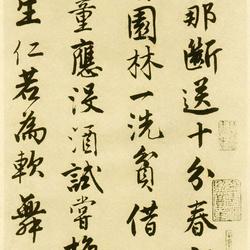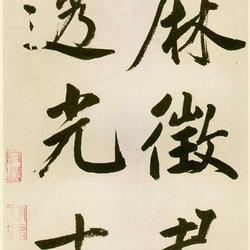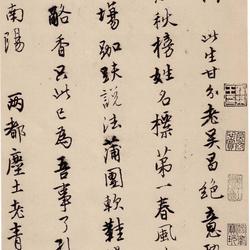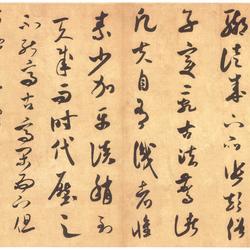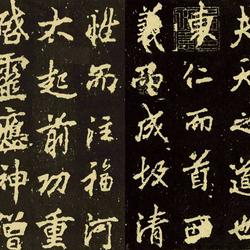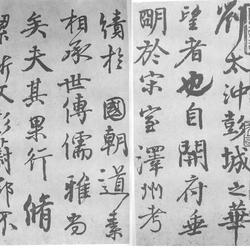Wang Xianzhi's "Luo Shen Fu" written in small regular script by Cao Zhi since the Song Dynasty only has the remaining thirteen lines in the middle, so most people refer to it as "Thirteen Lines" for short, and the original version no longer exists.
There are two copies of "Thirteen Lines of Luo Shen Fu" circulated in the Song and Yuan Dynasties: one is Jin Ma Jian, which was obtained by the calligrapher Zhao Mengfu in the early Yuan Dynasty and was determined to be the original work of Wang Xianzhi. One is made on hard yellow paper of the Tang Dynasty, with later inscriptions and postscripts by Liu Gongquan and others. Zhao Mengfu determined it to be a Tang copy, and later generations suspected that it was Liu Gongquan's. Both of these books were engraved on stone in the Song Dynasty, and were repeatedly engraved in the Ming and Qing dynasties, but they were basically based on these two originals. Among the stone carvings that do not have Liu's manuscript version, the "jasper version" is considered to be the most accurate. This is a stone carving found underground in Geling, West Lake, Hangzhou during the Wanli period of the Ming Dynasty. The color of the stone is dark and dark, and it is known as jasper. It is the first rubbing of the "jasper version". Most of the characters are intact, and other stone flowers are naturally clear. Because the place is the former site of Jia Sidao Banxiantang, later generations believe that it was carved by Jia family, and it was later attributed to Lu Menghe and Weng Songnian. During the reign of Emperor Kangxi of the Qing Dynasty, after the Eight-Power Allied Forces captured Beijing, this stone became popular among the people. After liberation, it was acquired by the state and kept in the Capital Museum. There is another copy similar to this in Shizhuan, known as the "white jade version". The strokes are slightly thinner than the "jasper version", and there are traces of knife carvings on the peeling stone flowers, which shows that it is a reprinted version.
"Luo Shen Fu" (thirteen lines) written by Wang Xianzhi is elegant in style, simple and quiet, elegant and flowing, and is extremely harmonious with the connotation of the article. This masterpiece was praised by later generations as "the best regular script", and Yang Bin of the Qing Dynasty " "Tiehanzhai Shuhao" believes that "the characters are beautiful, vigorous and smooth, and the small regular script in the world is unparalleled". It can be seen from "Luo Shen Fu" (thirteen lines) that Wang Xianzhi's regular script writing style no longer has an official meaning, and the character shape has also changed from horizontal to vertical, and it is a fully mature regular script work.
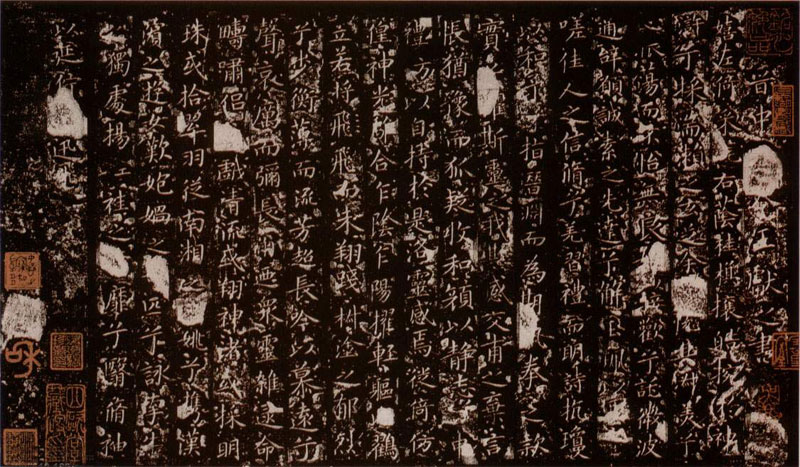
Thirteen lines of Luo Shen Fu, Capital Museum rubbings

